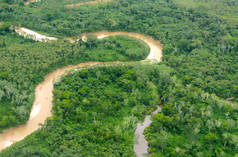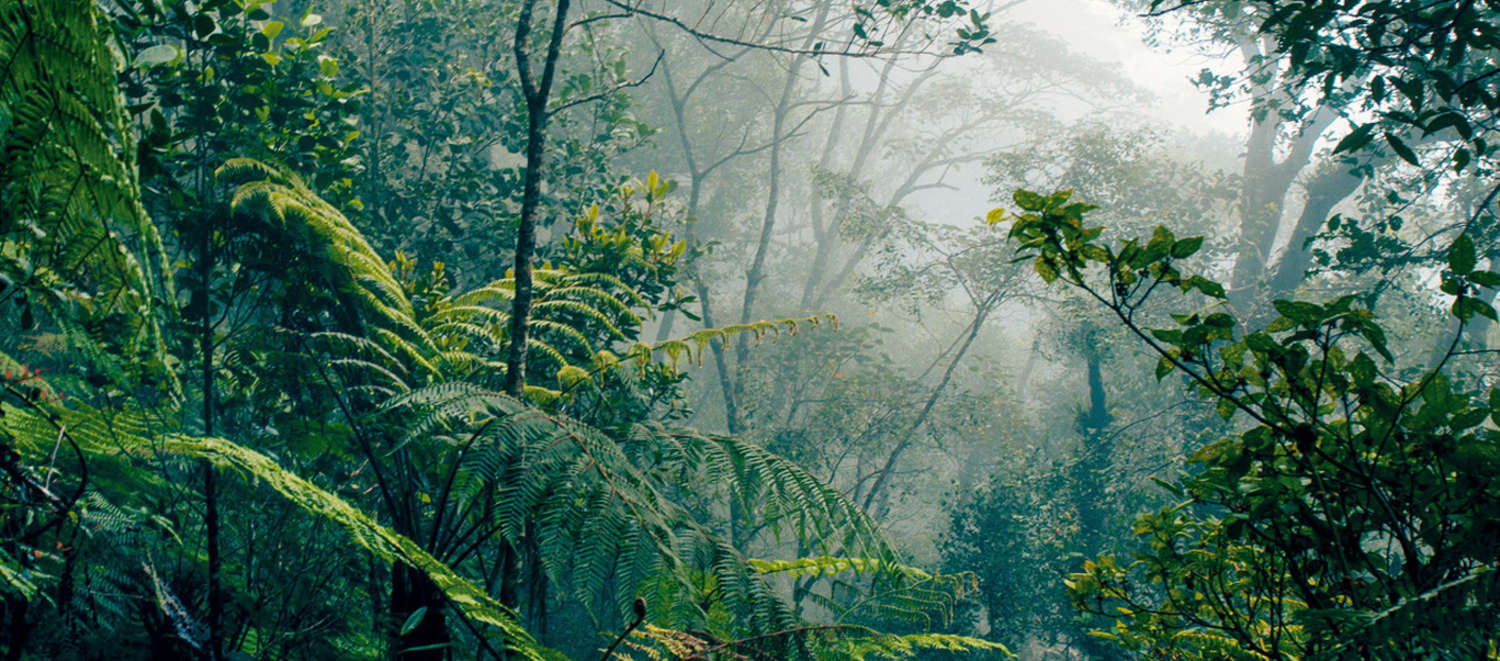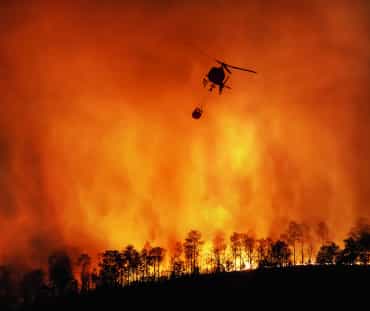The climate crisis: protecting forests and soils
At 438 gigatons, Earth’s forests store enormous amounts of carbon. Tropical forests account for almost two thirds of this amount. The preservation of forests is therefore crucial to climate protection. We urgently need to put a stop to worldwide deforestation and the plundering of forests.
Life on Earth is carbon-based - all animals, plants and fungi are made up of organic carbon compounds. Plants bind carbon dioxide (CO2) from the air during photosynthesis to form biomass. Fungi and animals that feed on plants absorb that carbon into their bodies.
The Earth’s plants remove vast amounts of CO2 from the atmosphere and fixes it as biomass. 438 gigatons of carbon (Gt C) are stored in our planet’s vegetation. The oceans are also major carbon sinks.
When forests are cleared or burned, the soils exposed and moors drained, the biomass decomposes and the carbon contained in it escapes into the atmosphere as CO2. The atmosphere currently contains 839 gigatons of carbon – a figure that’s on the rise.
Please note that in order to be able to compare values directly, the quantity refers to the amount of carbon contained in the air in the form of carbon dioxide.
Where does the increasing proportion of CO2 in Earth’s atmosphere come from?
The rapid increase of carbon in the atmosphere began with the industrial revolution. Around 1750, it still amounted to 589 Gt C. Today, there is nearly half again as much as 250 years ago.
Humans currently emit 8.9 Gt C every year. Our burning of fossil fuels such as oil, natural gas and coal and the production of vast quantities of cement for the construction industry account for the bulk of those emissions – 7.8 Gt C per year. By clearing and burning forests and other ecosystems, draining moors and using humus-rich soils for agriculture, we release 1.1 Gt C per year.
Natural cycles in vegetation, soil and oceans ensure that more than half – 4.9 Gt C per year – is removed from the atmosphere. The oceans absorb about 80.6 Gt C and emit 78.4 Gt C per year, making their net carbon sequestration 2.3 Gt C per year. Vegetation on land areas binds 123 Gt C and releases 119 Gt C per year. Its net carbon sequestration is thus 2.6 Gt C per year.
In total, human activities currently release about 4.1 gigatons more carbon per year than is bound again by natural processes.
What are the consequences of climate change?
The carbon dioxide we emit traps heat in the atmosphere and, together with other greenhouse gases such as methane and nitrous oxide, is responsible for man-made global warming.
Many people believe that climate change is not necessarily a bad thing and that having the planet a few degrees warmer – especially in cooler regions – would even be beneficial. This disregards the huge impact that climate change has on our lives, however. Extreme weather events such as severe storms, droughts and torrential rains are increasing in strength and frequency – a serious threat to human health, our infrastructure and our food security.
The melting of the polar caps and glaciers are an even greater cause for concern. Sea levels will rise by several meters and inundate densely populated coastal areas. Major coastal cities around the world are facing an existential threat.
Preserving and protecting natural ecosystems, soils and oceans is therefore not only vital for maintaining biodiversity, but also to stave off climate collapse and the flooding of coastal areas.
Carbon storage of individual ecosystems
Earth’s forests and natural landscapes store varying amounts of carbon. Here are some of the relevant ecosystems:
Tropical rainforests
Rainforests store a total of 262 gigatons of carbon (Gt C) – two thirds of the total of 483 Gt C stored in vegetation worldwide. Per hectare of rainforest, this is between 120 and 400 tons of carbon, depending on vegetation and soil.
To put these figures into perspective, the forests of the temperate climate zones account for 47 Gt C and the boreal forests 54 Gt C.
Peat bogs and tropical peat bog forests
Humus layers of soils are particularly rich in carbon. Many ecosystems deposit ever thicker layers of dead biomass. In the case of peat, the humus layer or organic mass can become many meters thick and store enormous amounts of carbon.
Peat forests in Indonesia, for example, store up to 6,000 tons of carbon per hectare. No other country has more peat forest. Totaling some 22 million hectares – almost ten percent of Indonesia’s surface area – they cover many low-lying coastal areas in Sumatra, Borneo and New Guinea (West Papua). Oil palm and other industrial tree plantations are the main drivers of their destruction.
The loss of peat bog forests worldwide releases more than three billion tons of CO2 per year.
Grasslands, steppes and tundra
Grasslands also store enormous amounts of carbon – between 12 and 20 percent of the total. About 25 percent of the planet (about 3.4 billion hectares) is naturally covered by these ecosystems.
As is the case with peat bogs, about 80 percent of the carbon bound in the grassland ecosystem is accounted for by the humus layers of the soil, which often reach a meter or more in thickness. In contrast to tropical rainforests, the vegetation of grasslands contains only about 20 percent of the carbon. Most of it is stored underground, in roots and tubers. The plant mass above-ground only accounts for 20 to 40 percent of the total carbon.
When grasslands burn – a common occurrence in nature – only the small share of above-ground carbon is released into the atmosphere. Roots and tubers, as well as the humus layer, are hardly affected. Shortly after a fire, the plants resume growing and replace the burnt parts.
However, around a quarter of all grasslands worldwide are used intensively for agriculture, causing the humus layers to gradually decompose and release the stored carbon. Preserving the humus layers of the soil is therefore crucial to protecting the climate.
Oceans
By far the largest part of the carbon that our planet stores above ground – 37,100 Gt C – is dissolved in the water of the oceans. Of these, 900 Gt C are located near the surface in exchange with the atmosphere.
Less than one thousandth of the Earth’s carbon is on the surface: A total of 122,576,000 gigatons of carbon are permanently stored in rock inside the crust and mantle of the Earth.
Stored carbon quantities at a glance
(all figures in gigatons of carbon = billions of tons):
– Earth’s crust and mantle: 122,576,000 Gt C = permanently stored
– Oceans: 37,100 Gt C
of which 900 Gt C are near the water surface in exchange with the atmosphere
– Soils up to one meter depth: 1,325 Gt C
All soils, including those deeper than one meter: 3,000 Gt C
– Vegetation: 438 Gt C
of which forests: 363 Gt C
of which tropical forests: 262 Gt C
temperate forests: 47 Gt C
boreal forests: 54 Gt C
– Earth’s atmosphere: 839 Gt C (2018)
Source:
USDA, 2017: Considering Forest and Grassland Carbon in Land Management. General Technical Report WO-95: https://www.fs.fed.us/research/publications/gtr/gtr_wo95.pdf
















